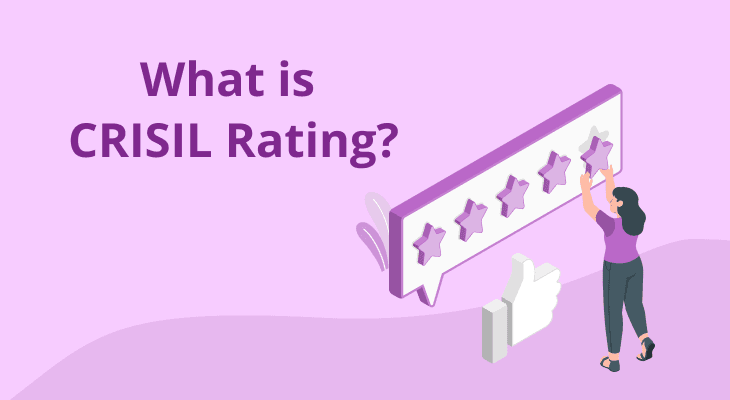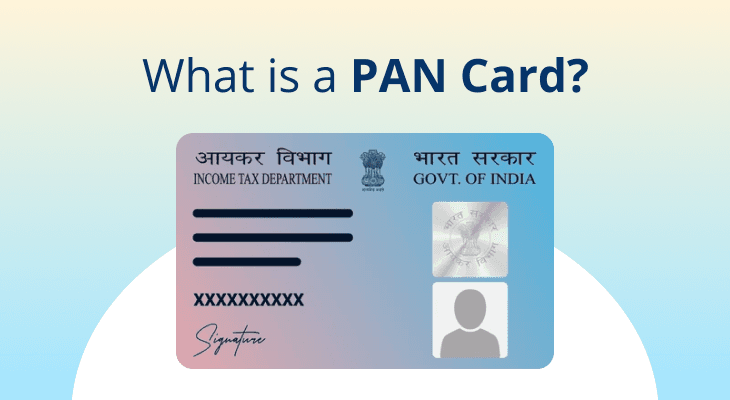
What Is CRISIL Rating ?
The Indian mutual fund industry has witnessed explosive growth in recent years, with assets under management (AUM) soaring from ₹22.26 trillion as of March 31, 2020, to ₹69.50 trillion by April 30, 2025 - a more than threefold increase in just five years. In an environment where investors are spoilt for choice, understanding what is CRISIL Rating and how it can guide your decisions is vital. This CRISIL rating framework offers an independent, transparent benchmark to assess fund performance, helping both novice and seasoned investors navigate the complex mutual fund universe with confidence.
We work hard to earn our money, so when it comes to investing, it’s only fair that our money works even harder for us. Choosing the right investment strategy is key, and CRISIL ratings play a crucial role in guiding us toward smarter, more informed decisions. By offering an independent, data-driven evaluation of mutual funds, based on factors like returns, risk, and consistency, CRISIL ratings help eliminate guesswork. They empower investors to compare funds within the same category and select options that truly align with their financial goals and risk appetite. Let us delve further into this.
Let’s understand CRISIL Rating better
At its core, a CRISIL rating for mutual funds is a standardised ranking assigned by CRISIL—India’s premier credit rating agency—that evaluates schemes on a scale of 1 (very good performance) to 5 (poor performance). Unlike a traditional CRISIL credit rating that measures an issuer’s creditworthiness, the CRISIL mutual fund ranking (CMFR) synthesizes both historical returns and portfolio attributes to deliver a single-point assessment of a fund’s relative strength.
Points to Note:
- Rank 1 funds fall in the top 10th percentile of their peer group.
- Rank 2 covers the next 20th percentile; subsequent ranks follow in 30th, 20th, and 20th percentiles respectively.
- The CMFR model was launched in June 2000 and has become a trusted benchmark among investors, distributors, and asset management companies.
Why Does CRISIL Rating Matter?
- Objective Comparison: A CRISIL rating strips away marketing jargon, allowing you to compare funds on a like-for-like basis. In March 2025 alone, industry-wide AUM touched a record ₹65.74 lakh crore, underscoring the sheer scale and complexity of choices available.
- Risk-Adjusted Insight: By incorporating metrics such as risk-adjusted returns (e.g., Sharpe ratio), portfolio concentration, liquidity, and asset quality, the ranking offers a multi-dimensional view, crucial for urban professionals balancing growth and protection.
- Regulatory Confidence: Though SEBI regulates mutual funds and credit rating agencies separately, CMFR’s transparent methodology ensures that the CRISIL credit rating model adheres to best practices without being misleading.
Example
Suppose you are choosing between two large-cap equity schemes: Fund A has delivered 15% annualised returns over three years with moderate volatility, while Fund B has 18% returns but double the standard deviation. A CRISIL Fund Rank 1 for Fund A versus Rank 2 for Fund B signals that the former offers a better risk-return trade-off, even if its raw returns are lower.
What Types of Mutual Funds Are Ranked?
CRISIL’s mutual fund rankings span the entire gamut of asset classes:
- Equity Funds (large-cap, mid-cap, small-cap, multi-cap, thematic)
- Debt Funds (short-term, ultra short-term, credit risk, gilt)
- Hybrid Funds (balanced, dynamic asset allocation, monthly income plans)
Beyond these broad buckets, CMFR drills down into sub-categories—such as ELSS and focused funds—ensuring that the comparison is granular and meaningful.
CRISIL Rankings Categories
CRISIL Fund Rank | Percentile Band | Descriptor |
1 | Top 10% | Very Good |
2 | Next 20% | Good |
3 | Next 30% | Average |
4 | Next 20% | Below Average |
5 | Bottom 20% | Poor |
This 1–5 scale aligns with global best practices and is updated quarterly. Each rank is derived from composite scores across multiple time horizons (e.g., three-year, five-year returns) and portfolio parameters.
How CRISIL Rates Mutual Funds?
CRISIL’s proprietary methodology evaluates funds on both quantitative and qualitative criteria:
- Quantitative:
- Risk-adjusted returns (Sharpe and Sortino ratios)
- Consistency of returns across market cycles
- Portfolio concentration (top-stock weightage)
- Liquidity measures (turnover, cash holdings)
- Qualitative:
- Fund manager tenure and track record
- Process robustness (research, risk controls)
- Fund house infrastructure and governance framework
- Anomalies such as sudden AUM spikes or high churn rates are flagged for deeper review
Illustration: Sample Methodology Flow
- Data Collection: NAV, portfolio holdings, risk metrics.
- Normalisation: Adjust for scheme size and market movements.
- Scoring: Assign weights to parameters; compute composite score.
- Ranking: Map scores into percentile bands; allocate CMFR Rank.
Points to Note:
- Returns below one year are absolute; beyond one year they are annualised.
- In the event of a scheme merger, performance of the transferee scheme is displayed.
- CMFR is distinct from statutory credit ratings; it is purely a performance ranking tool.
Thus, for 21–45-year-old urban professionals and aspiring investors, a clear grasp of what is CRISIL rating and how CRISIL credit rating models differ unlocks smarter fund choices. Whether you’re building a growth-oriented equity portfolio or seeking stable income in debt, leveraging CMFR can significantly streamline your research. As Indian mutual funds continue to scale new heights - grounding your decisions in a reputable ranking framework is no longer optional; it’s imperative.
By integrating CRISIL rankings into your investment process, you empower yourself with a data-driven, disciplined approach—transforming the myriad of options into a curated shortlist of high-conviction funds ready to help you achieve your financial goals.


